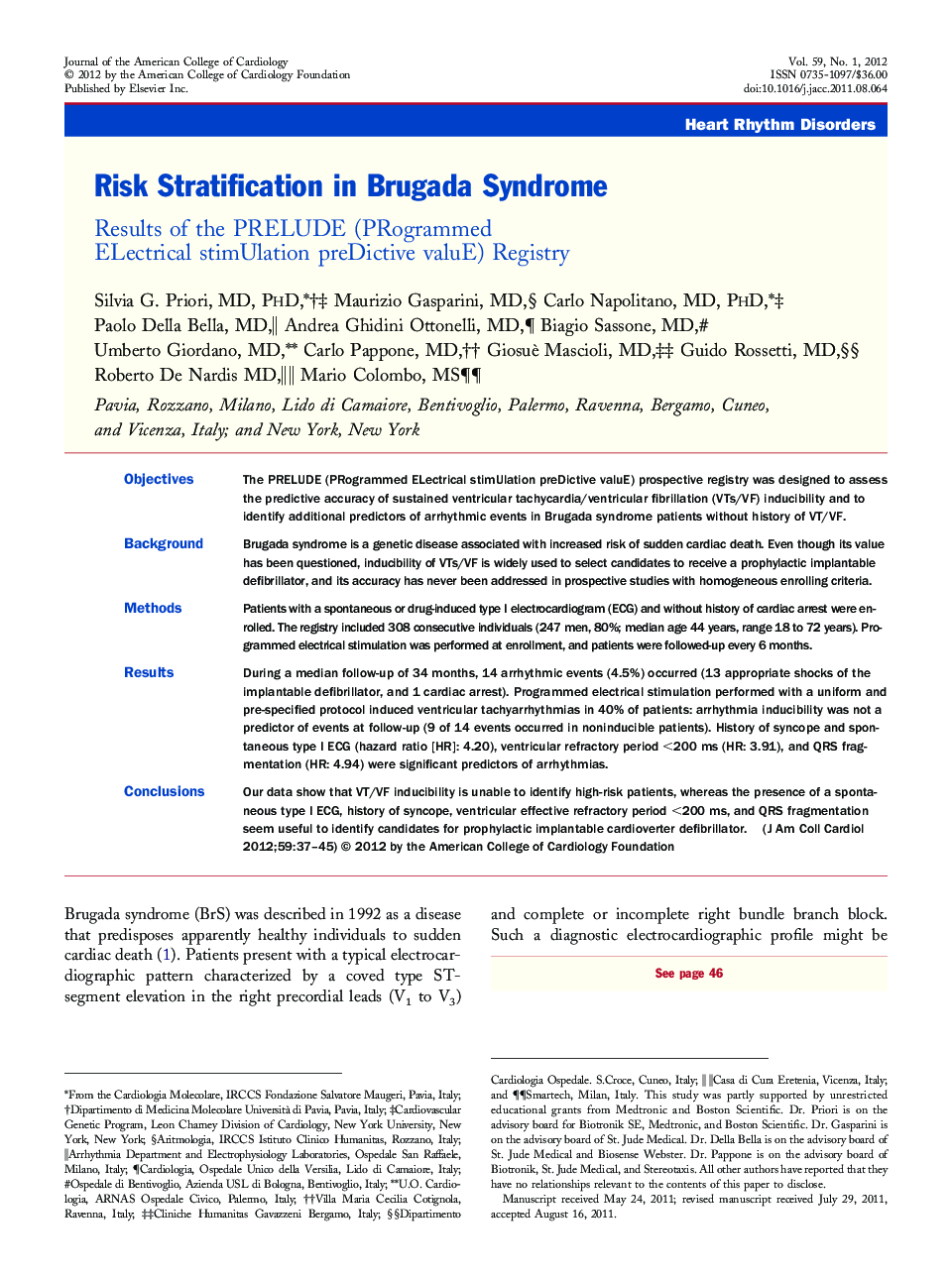| Article ID | Journal | Published Year | Pages | File Type |
|---|---|---|---|---|
| 2947439 | Journal of the American College of Cardiology | 2012 | 9 Pages |
ObjectivesThe PRELUDE (PRogrammed ELectrical stimUlation preDictive valuE) prospective registry was designed to assess the predictive accuracy of sustained ventricular tachycardia/ventricular fibrillation (VTs/VF) inducibility and to identify additional predictors of arrhythmic events in Brugada syndrome patients without history of VT/VF.BackgroundBrugada syndrome is a genetic disease associated with increased risk of sudden cardiac death. Even though its value has been questioned, inducibility of VTs/VF is widely used to select candidates to receive a prophylactic implantable defibrillator, and its accuracy has never been addressed in prospective studies with homogeneous enrolling criteria.MethodsPatients with a spontaneous or drug-induced type I electrocardiogram (ECG) and without history of cardiac arrest were enrolled. The registry included 308 consecutive individuals (247 men, 80%; median age 44 years, range 18 to 72 years). Programmed electrical stimulation was performed at enrollment, and patients were followed-up every 6 months.ResultsDuring a median follow-up of 34 months, 14 arrhythmic events (4.5%) occurred (13 appropriate shocks of the implantable defibrillator, and 1 cardiac arrest). Programmed electrical stimulation performed with a uniform and pre-specified protocol induced ventricular tachyarrhythmias in 40% of patients: arrhythmia inducibility was not a predictor of events at follow-up (9 of 14 events occurred in noninducible patients). History of syncope and spontaneous type I ECG (hazard ratio [HR]: 4.20), ventricular refractory period <200 ms (HR: 3.91), and QRS fragmentation (HR: 4.94) were significant predictors of arrhythmias.ConclusionsOur data show that VT/VF inducibility is unable to identify high-risk patients, whereas the presence of a spontaneous type I ECG, history of syncope, ventricular effective refractory period <200 ms, and QRS fragmentation seem useful to identify candidates for prophylactic implantable cardioverter defibrillator.
